Welche Highlights und Attraktionen dürfen Sie beim Urlaub in Bukarest auf keinen Fall versäumen? Hier finden Sie eine Liste der Top 10 Sehenswürdigkeiten von Bukarest!
Bukarest, Rumäniens Hauptstadt, ist eine Stadt der Gegensätze. Einst wurde die mittelalterliche Metropole mit den breiten Boulevards „Paris des Balkans“ genannt. Als der Diktator Nicolae Ceausescu an die Macht kam, ließ er plane Betonbauten errichten, denen so mancher historischer Bau zum Opfer fiel.
Dennoch blieben einige der neoklassizistischen Schmuckstücke erhalten und auch das eine oder andere gigantische Gebäude Ceausescus zählt mittlerweile zu Bukarests Top Sehenswürdigkeiten.
Inhaltsverzeichnis
Konzerthaus Athenäum

Das Athenäum wird oft als schönstes Gebäude in Bukarest bezeichnet. Der säulenbewährte Vorbau mit dem dreieckigen Giebelbach erinnert an einen griechischen Tempel. In Wahrheit ist das Athenäum eine Mischung aus Gotik und Neoklassizismus. Sein runder Grundriss sorgt für eine exzellente Akustik und formt den perfekten Rahmen für unvergessliche Konzertabende.
Das Konzerthaus von Bukarest wurde 1888 errichtet und zum Großteil durch öffentliche Spenden finanziert. Unter seiner Kuppel, deren Fresken Szenen aus der Geschichte Rumäniens darstellen, befindet sich der Sitz des George Enescu Philharmonischen Orchesters.
Der Name des Athenäums erinnert – ebenfalls wie jener der griechischen Hauptstadt Athen – an Pallas Athene, die griechische Göttin der Weisheit. Besichtigt werden kann das Athenäum leider nur im Rahmen von Vorstellungen – und die sind aufgrund ihrer Beliebtheit meist rasch ausverkauft. Wer also ein Konzert im Athenäum besuchen möchte, sollte sich bereits im Vorfeld Tickets sichern.
Königlicher Palast und Nationales Kunstmuseum

Gleich schräg gegenüber des Konzerthauses, am Platz der Revolution, liegt der ehemalige Königliche Palast von Bukarest. Er stammt aus dem 19. Jahrhundert und beherbergt heute das Nationale Kunstmuseum von Rumänien. Bis 1947 residierte hier der rumänische König Michael I.
Innerhalb seiner massiven Mauern werden Kunstwerke verschiedenster Epochen gezeigt. Ein Schwerpunkt des Museums liegt auf Skulpturen und Gemälden rumänischer Künstler, die hauptsächlich aus der Antike und dem Mittelalter stammen. In der zweiten Hauptabteilung werden mit insgesamt 12.000 Ausstellungsstücken umfangreiche Sammlungen europäischer Künstler präsentiert.
In die internationalen Schlagzeilen kam der Königspalast im Jahr 1989. Der damalige Diktator Nicolae Ceausescu wollte eine Rede an sein Volk halten, mit dem Ergebnis, dass er mit einem Hubschrauber vor der aufgebrachten Menge in Sicherheit gebracht werden musste.
Parlamentspalast
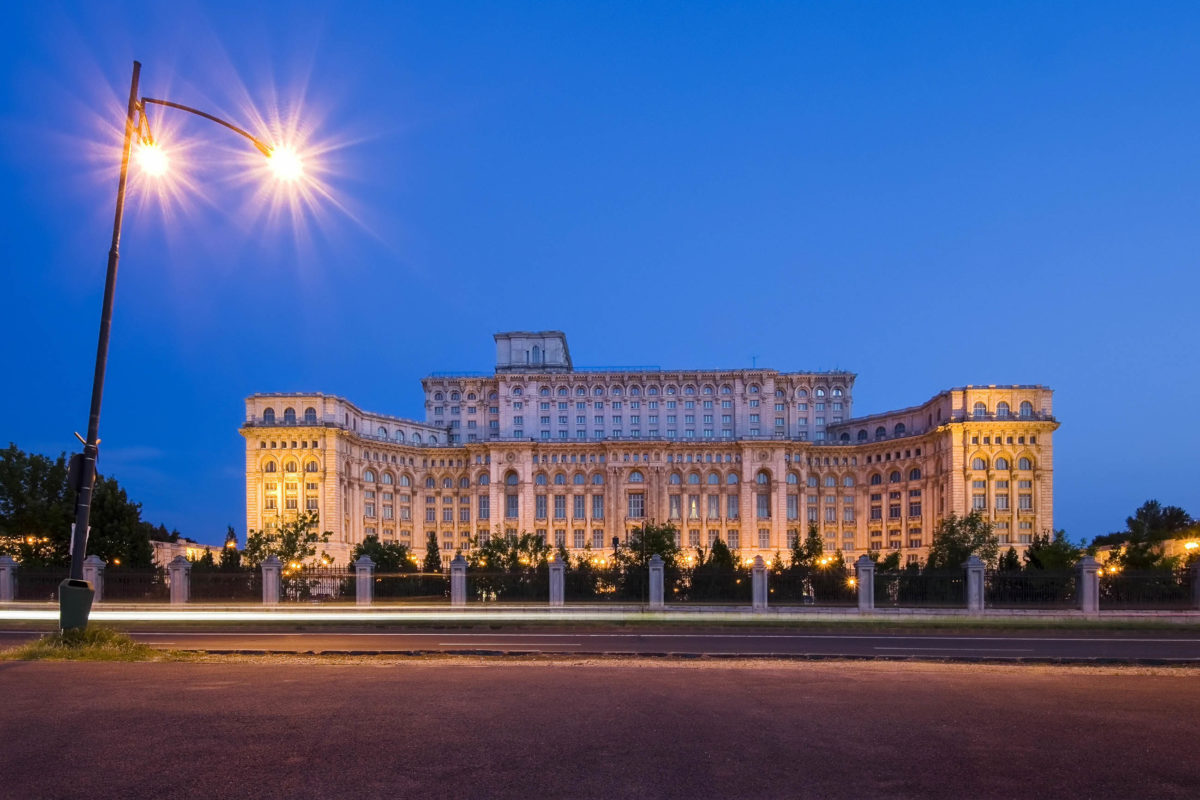
Ein Grund für den Unmut des Volkes gegenüber seinem Herrscher war wohl dieser: Der enorme Parlamentspalast ist Bukarests bestes Beispiel für Nicolae Ceausescus Größenwahn. Die „monströse Metapher für maßlose Tyrannei“ hält Platz 1 der größten Bauwerke Europas und ist das größte Parlamentsgebäude der Welt. Für seine Errichtung ließ der kommunistische Diktator in den 1980er-Jahren ein ganzes Stadtviertel abreißen und die Bevölkerung jahrelang hungern. Dennoch nannte er den gigantischen Bau irrwitzigerweise „Casa Poporului“ – „Haus des Volkes“.
Besagtes Volk lebte in Armut, Rumänien war nahe am Staatsbankrott und der Tyrann schwelgte im Luxus. Ceausescu erlebte die Fertigstellung seines Prunkpalastes allerdings nicht mehr – er wurde im Dezember 1989 während der Revolution hingerichtet. Seitdem hieß das Gebäude auch Palast des Parlamentes und beherbergt heute die Abgeordnetenkammer des Senats sowie das Nationalmuseum für Moderne Kunst.
Die rund 5100 Zimmer sind zum Großteil unmöbliert, zeigen mit Marmorböden, kostbaren Teppichen und goldbestickten Samtvorhängen jedoch den Reichtum, den sich Ceausescu auf Kosten seines Volkes aneignete. Der Bau ist von außen überwältigend anzusehen und auch Führungen durch sein Innenleben sind gegen Voranmeldung möglich.
Villa Ceausescu
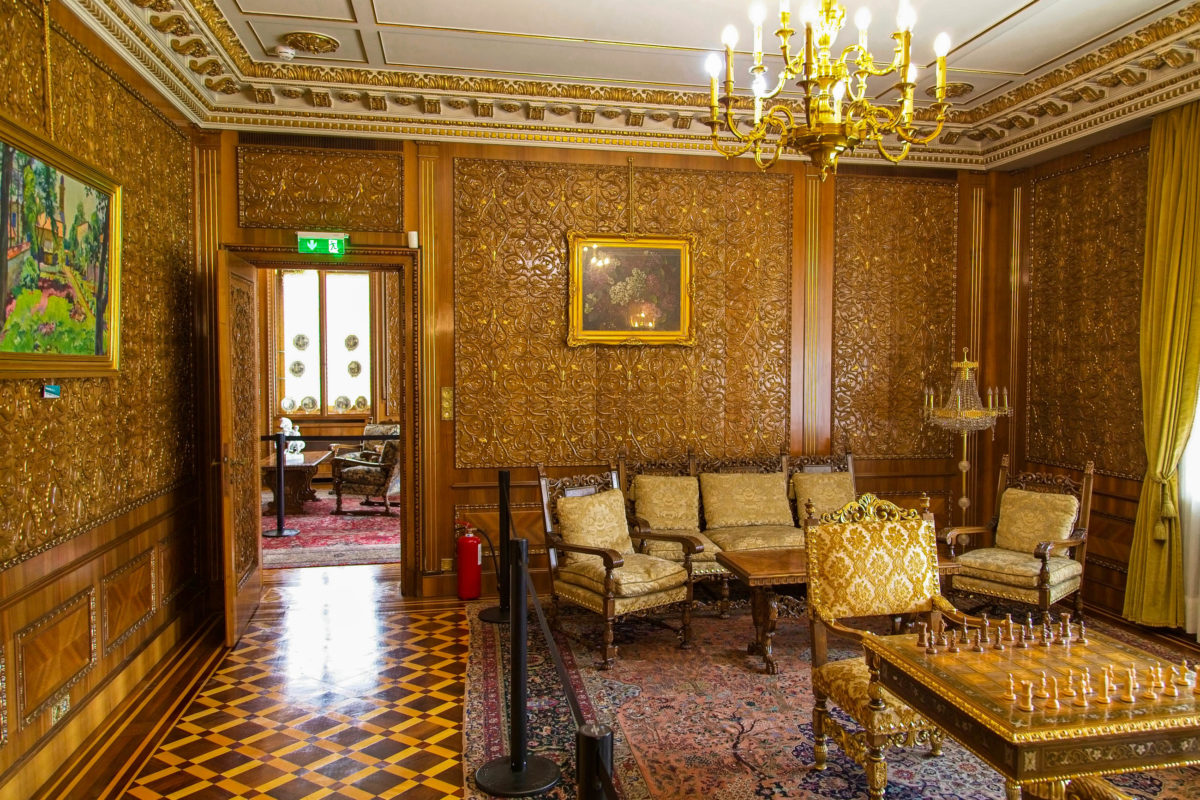
Nicht weit vom Parlamentspalast entfernt (der Diktator wollte schließlich nicht weit zu Fuß gehen müssen) liegt die ehemalige Residenz von Nicolae Ceausescu und seiner Familie. Nahezu 20 Jahre wohnte der rumänische Präsident hier mit seiner Frau Elena und seinen drei Kindern, zwei Söhnen und einer Tochter.
Ähnlich wie der Parlamentspalast strotzt(e) auch die Villa Ceausescu vor allem erdenklichem Luxus. Das Mobiliar der rund 80 Zimmer wirkt antik, war jedoch nigelnagelneu und äußerst exquisit, im Keller war ein Privatkino eingerichtet, die Toilettenpapierhalter waren aus Gold und ein Schwimmbad gab es natürlich auch. Trotz des pompösen Interieurs ist die Atmosphäre des Anwesens unpersönlich und kühl, nahezu depressiv.
Die elegante Villa fungiert heute als Museum und kann zur Gänze besichtigt werden. Führungen müssen allerdings im Voraus gebucht werden.
Arcul de Triumf (Triumphbogen)

Als „Paris des Balkans“ braucht Bukarest natürlich wie die französische Hauptstadt einen Triumphbogen. Und den hat es. Der Arcul de Triumf befindet sich am gleichnamigen Platz und ist unübersehbar ein Abbild des Pariser Arc de Triomphe an der Champs Élyssés. Mit 27 Metern ist er allerdings nur etwa halb so hoch wie sein französisches Pendant.
Der rumänische Triumphbogen wurde 1878 fertiggestellt, damals noch in einer Version aus Holz. Sein heutiges Erscheinungsbild erhielt das Denkmal im Jahr 1936. Damals wurde es am 1. Dezember eingeweiht, dem rumänischen Nationalfeiertag. Es erinnert an die Wiedervereinigung Rumäniens im Jahr 1918. Der Arcul de Triumf ist übrigens auch das Zentrum der Feierlichkeiten zum Nationalfeiertag. Am 1. Dezember wird hier die Parade abgehalten und die gesamte Straße ist mit Bändern und Fahnen geschmückt.
Passage Macca-Vilacrosse

Shoppen und schlemmen heißt es in der Passage Macca-Vilacrosse, die mit der Calea Voctoriei an einer der Hauptstraßen von Bukarest liegt. Wer in Rumäniens Hauptstadt ägyptisch oder chinesisch essen möchte, befindet sich hier an der richtigen Adresse.
Der spanisch klingende Name und die westeuropäische Architektur der Arkadenstraße stammen nicht von ungefähr. Beides geht auf Mihalache Macca und seinen Bruder Xavier Vilacrosse zurück. Letzterer heiratete in einen Gasthof ein, der zuvor an Stelle der gabelförmigen Arkadenstraße stand. Der katalanische Architekt ließ den Gasthof abreißen und die mit gelbem Glas bedeckte Passage errichten. 1891 war sie vollendet. Ihren Namen allerdings erhielt sie erst in den 2010er-Jahren, zuvor hieß sie Pasajul bijuteria („Juwelier Passage“).
Kloster Stavropoleos
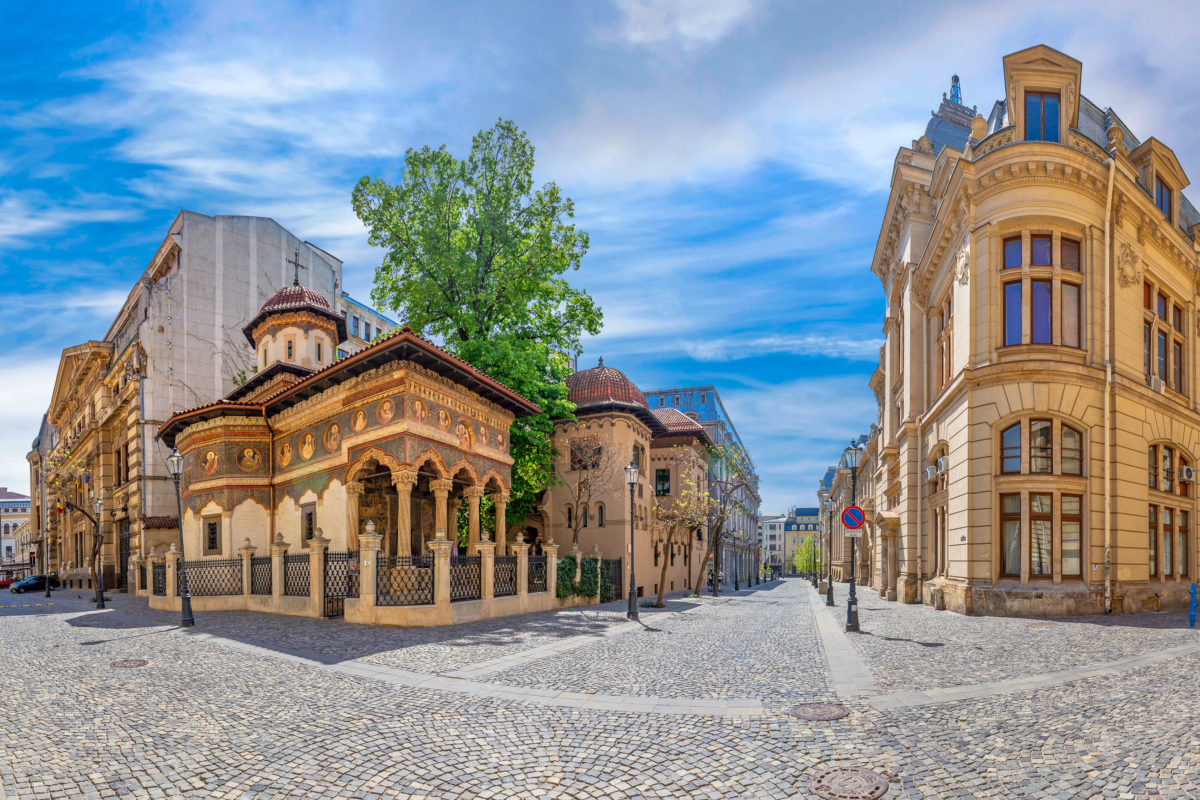
Das rumänisch-orthodoxe Kloster Stavropoleos im historischen Teil der Stadt zählt zu den wichtigsten Architekturdenkmälern von Bukarest. Der griechische Mönch Ioanichie Stratonikeas gründete das Kloster im Jahr 1724 als Herberge für vorbeiziehende Reisende und Händler. Mit den Einnahmen aus der Karawanserei konnte das Kloster finanziert werden.
Die den Erzengeln Michael und Gabriel geweihte Kirche ist das einzige Gebäude, welches vom Kloster bis heute erhalten blieb. In einem Neubau neben dem Gotteshaus befinden sich die Wohnräume der Nonnen, eine Bibliothek, ein Konferenzsaal und einige Ikonen und Fresken aus dem 18. Jahrhundert. Sie wurden teils aus anderen Kirchen gerettet, die im Zuge der kommunistischen Herrschaft zerstört wurden.
Neben der sehenswerten Architektur ist das Stavropoleos-Kloster auch für seinen Kirchenchor berühmt, der die byzantinische Musik wieder aufleben lässt. Hier befindet sich auch Rumäniens größte Sammlung an byzantinischen Musikbüchern.
Botanischer Garten

Wer vom Sightseeing in Bukarest mal eine Pause braucht, sollte diese im lauschigen Botanischen Garten verbringen. Hier warten himmlische Ruhe am Teich und sattes Grün in frischer Luft als Kontrast zu Lärm und Hektik der City. Stellen Sie sich auf eine Explosion an Gerüchen und Farben ein!
Der Botanische Garten wurde 1860 von Alexandru Ioan Cuza in der Nähe des Schlosses Cotroceni gegründet. Seit 1874 werden die über 500 Pflanzenarten von der Universität von Bukarest betreut und gepflegt.
Zu den Attraktionen im Botanischen Garten von Bukarest zählen riesige Palmen und Bananenbäume, der fast 1000 Quadratmeter große Rosengarten mit rund 130 Arten, herrliche Orchideen, bedrohte europäische Pflanzen und Gewächse aus dem Mittelmeerraum.
Parcul Regele Mihai I al României (König-Michael-I.-von-Rumänien-Park)
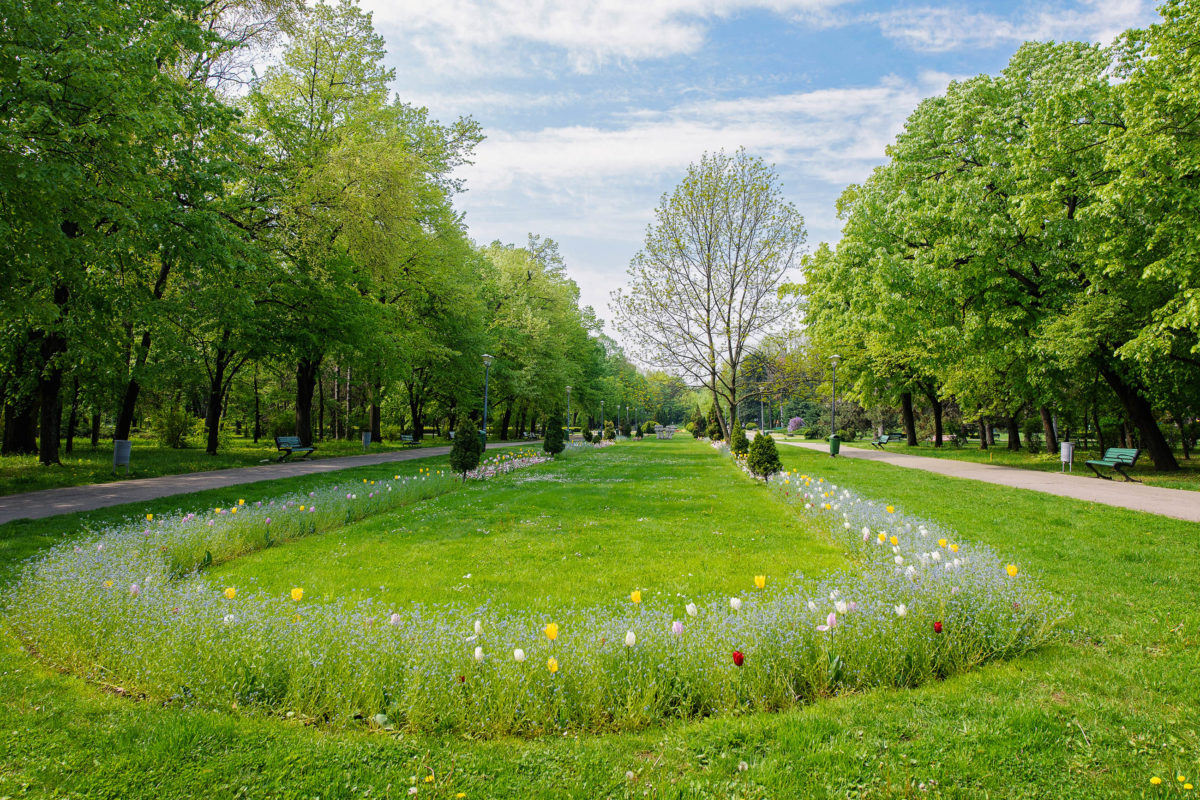
Blumen- und Pflanzenfreunde kommen auch im Stadtpark auf ihre Kosten! Der äußerst sehenswerte Parcul Regele Mihai I al României ist der größte Park von Bukarest und gilt seit 2004 als Naturdenkmal. Er liegt im Norden der Stadt und wurde 1936 auf einem ehemaligen Sumpfgebiet angelegt.
Gut die Hälfte der Fläche wird vom 0,7 Quadratkilometer großen Herăstrău-See eingenommen, um den sich der Park erstreckt. Eine Bootsrunde auf dem See, ein Picknick zwischen Blumen oder ein Spaziergang unter majestätischen Bäumen lassen die Hektik der Großstadt vergessen.
Zu den Highlights des König-Michael-I.-von-Rumänien-Parks gehören die wunderbaren Blumenarrangements, die jährliche Gartenausstellung „Expoflora“, die Roseninsel, der japanische Garten und das riesige Freilichtmuseum Muzeul Național al Satului „Dimitrie Gusti”.
Freilichtmuseum Muzeul Național al Satului „Dimitrie Gusti”
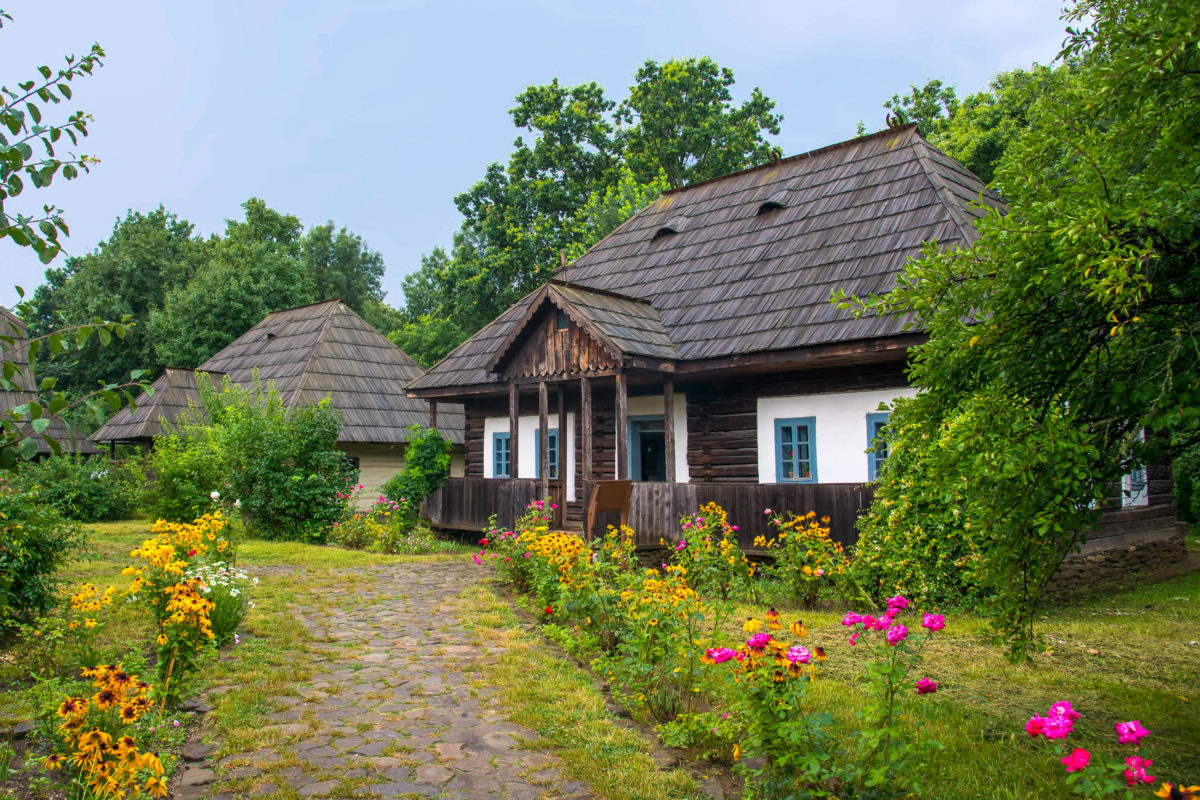
Eine Zeitreise in Rumäniens vergangene Jahrhunderte treten Besucher im Freilichtmuseum Muzeul Național al Satului „Dimitrie Gusti” an. Das Dorfmuseum wurde 1936 von Dimitrie Gusti, Victor Ion Popa und Henri H. Stahl im Stadtpark etwas außerhalb von Bukarests Zentrum gegründet. Mit einer Fläche von über 100.000 Quadratmeter ist es eines der größten Freilichtmuseen des gesamten Balkans.
Knapp 300 original erhaltene Gebäude aus allen Teilen des Landes stellen einerseits das bäuerliche Leben dar und zeigen andererseits die verschiedensten Baustile Rumäniens. Die authentischen Bauernhöfe, Erdhäuser, Holzkirchen, Werkstätten und Mühlen geben einen detaillierten Einblick in den damaligen Alltag. Zum Abschluss bietet sich ein Zwischenstopp im Café an, wo anhand allerlei Leckereien die kulinarische Seite Rumäniens vorgestellt wird.
BILDER: Die Top Sehenswürdigkeiten von Bukarest




